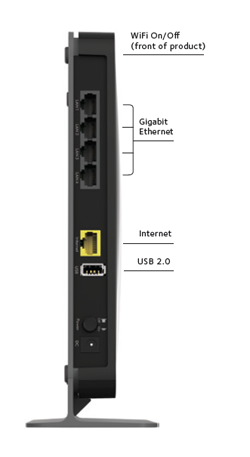- While many web browsers may seem similar, Safari sets itself apart. OS X has multi-touch gesturing built in, and Safari fully supports it. With Safari and OS X you can tap, scroll, and swipe your way around the web. With two fingers on the trackpad, you can swipe to go back and forth between web pages.
- 10.7.5 free download - Windows 10, Apple Mac OS X Lion 10.7.5 Supplemental Update, 7-Zip, and many more programs.
The best deals we found this week: $100 off the Mac mini M1 and more. Plus sales on Xbox gift cards and Amazon Fire tablets. Twitter Facebook Reddit Mail. 5.1.6 534.56.5 Mac OS X v10.7: May 9, 2012 Bundled with Mac OS X v10.7.4, contains stability improvements. 5.1.7 534.57.2 Mac OS X v10.6 - 10.7: May 9, 2012 Improve the browser's responsiveness when the system is low on memory. Fix an issue that could prevent webpages from responding after using a pinch to zoom gesture.
Many Mac users have recently reported issues with their Safari Browser. What usually happen are they can't open their Safari or the browser is not working properly.
If you're also experiencing this issue, you're no doubt very frustrated. But don't worry. The following are a few fixes that have helped many Mac users.
Try these fixes
You may not have to try them all; just work your way down the list until you find the one that works for you.
Fix 1: Update your Safari
You may be having your issue with your Safari because you are using an old version. You should try updating your browser and see if this fixes the issues for you. To do so:
- On your Mac computer, open App Store.
- On App Store, click Updates.
- Click the UPDATE button next to Safari if there's any update available.
- Wait for the update process to complete.
Now check to see if this fixes your Safari issue. If it does, great! But if not, there are still other fixes you can try…
Fix 2: Temporarily disable your antivirus
Your firewall or antivirus software can sometimes cause interference to your Safari browser. To see if that's the case for you, temporarily disable your firewall and see if your problem remains. (You may need to consult your firewall documentation for instructions on disabling it.)
If this resolves your problem, you can add your game to the whitelist of your firewall. You can contact the vendor of your firewall and ask them for advice. Or you can install a different antivirus solution.
IMPORTANT: Be extra careful about what sites you visit, what emails you open and what files you download when you have disabled your firewall.
Fix 3: Clean your browser cache
Corrupted cache can cause issues to your Safari browser. In this case, you should try cleaning it. Here's how you can do it:

- Close your Safari browser if it is running.
- On your keyboard, press the Shift key, the Command key and G at the same time to invoke the Go to Folder dialog.
- Type '~/library', then click Go.
- Double click the Caches folder.
- Move the com.apple.Safari and com.apple.Safari.SafeBrowsing folders to Trash.
You've now removed your Safari cache. Try launching your browser and see if this fix works for you.
Fix 4: Restore your Mac computer with Time Machine
You can fix your Safari browser by restoring your Mac system to a previous state. If you've previously set up Time Machine to create backups for your Mac computer, you can use these backups to restore your computer.
To open Time Machine:
- Click the search icon in the upper-right corner of your screen.
- Type 'time machine' and press Enter.
- Follow its instructions to restore your Mac computer from a backup.
Safari 10.1.2 Download For Mac
Hopefully, this fixes your browser issue. But if not, you may need to…
Fix 5: Reinstall your macOS

- Close your Safari browser if it is running.
- On your keyboard, press the Shift key, the Command key and G at the same time to invoke the Go to Folder dialog.
- Type '~/library', then click Go.
- Double click the Caches folder.
- Move the com.apple.Safari and com.apple.Safari.SafeBrowsing folders to Trash.
You've now removed your Safari cache. Try launching your browser and see if this fix works for you.
Fix 4: Restore your Mac computer with Time Machine
You can fix your Safari browser by restoring your Mac system to a previous state. If you've previously set up Time Machine to create backups for your Mac computer, you can use these backups to restore your computer.
To open Time Machine:
- Click the search icon in the upper-right corner of your screen.
- Type 'time machine' and press Enter.
- Follow its instructions to restore your Mac computer from a backup.
Safari 10.1.2 Download For Mac
Hopefully, this fixes your browser issue. But if not, you may need to…
Fix 5: Reinstall your macOS
If none of the fixes above works for you, you should try reinstalling your Safari to see if this fixes your browser issues. As it is included with your operating system, you should reinstall your macOS to reinstall the browser (this won't erase your personal data and settings). To reinstall your macOS:
- Back up your important data on your Mac computer. (Reinstalling macOS won't erase your data in most cases, but it's better safe than sorry.)
- Make sure your Mac computer is connected to the Internet.
- Click the Apple icon in the upper-left corner of your screen, then select Restart.
- Click Restart if you're prompted.
- Immediately as your Mac computer restarts, press and hold the Command key and R on your keyboard at the same time. Then release the keys when you see the Apple logo appears.
- Select your language, then click the next button (the arrow).
- Select Reinstall macOS, then click Continue.
- Follow the on-screen instructions to complete the reinstallation.
Hopefully one of the fixes above works for you. If you have any questions, feel free to leave us a comment below!
Devices and Mac OS X version
VLC media player requires Mac OS X 10.7.5 or later. It runs on any Mac with a 64-bit Intel processor or an Apple Silicon chip. Previous devices are supported by older releases.
Note that the first generation of Intel-based Macs equipped with Core Solo or Core Duo processors is no longer supported. Please use version 2.0.10 linked below.
If you need help in finding the correct package matching your Mac's processor architecture, please see this official support document by Apple.
Web browser plugin for Mac OS X
Support for NPAPI plugins was removed from all modern web browsers, so VLC's plugin is no longer maintained. The last version is 3.0.4 and can be found here. It will not receive any further updates.
Older versions of Mac OS X and VLC media player
We provide older releases for users who wish to deploy our software on legacy releases of Mac OS X. You can find recommendations for the respective operating system version below. Note that support ended for all releases listed below and hence they won't receive any further updates.
Mac OS X 10.6 Snow Leopard
Use VLC 2.2.8. Get it here.
Safari 10 For Mac
Mac OS X 10.5 Leopard
Use VLC 2.0.10. Get it for PowerPC or 32bit Intel.
Mac OS X 10.4 Tiger
Mac OS X 10.4.7 or later is required
Use VLC 0.9.10. Get it for PowerPC or Intel.
Mac OS X 10.3 Panther
QuickTime 6.5.2 or later is required
Use VLC 0.8.6i. Get it for PowerPC.
Mac OS X 10.2 Jaguar
Use VLC 0.8.4a. Get it for PowerPC.
Mac OS X 10.0 Cheetah and 10.1 Puma
Use VLC 0.7.0. Get it for PowerPC.

